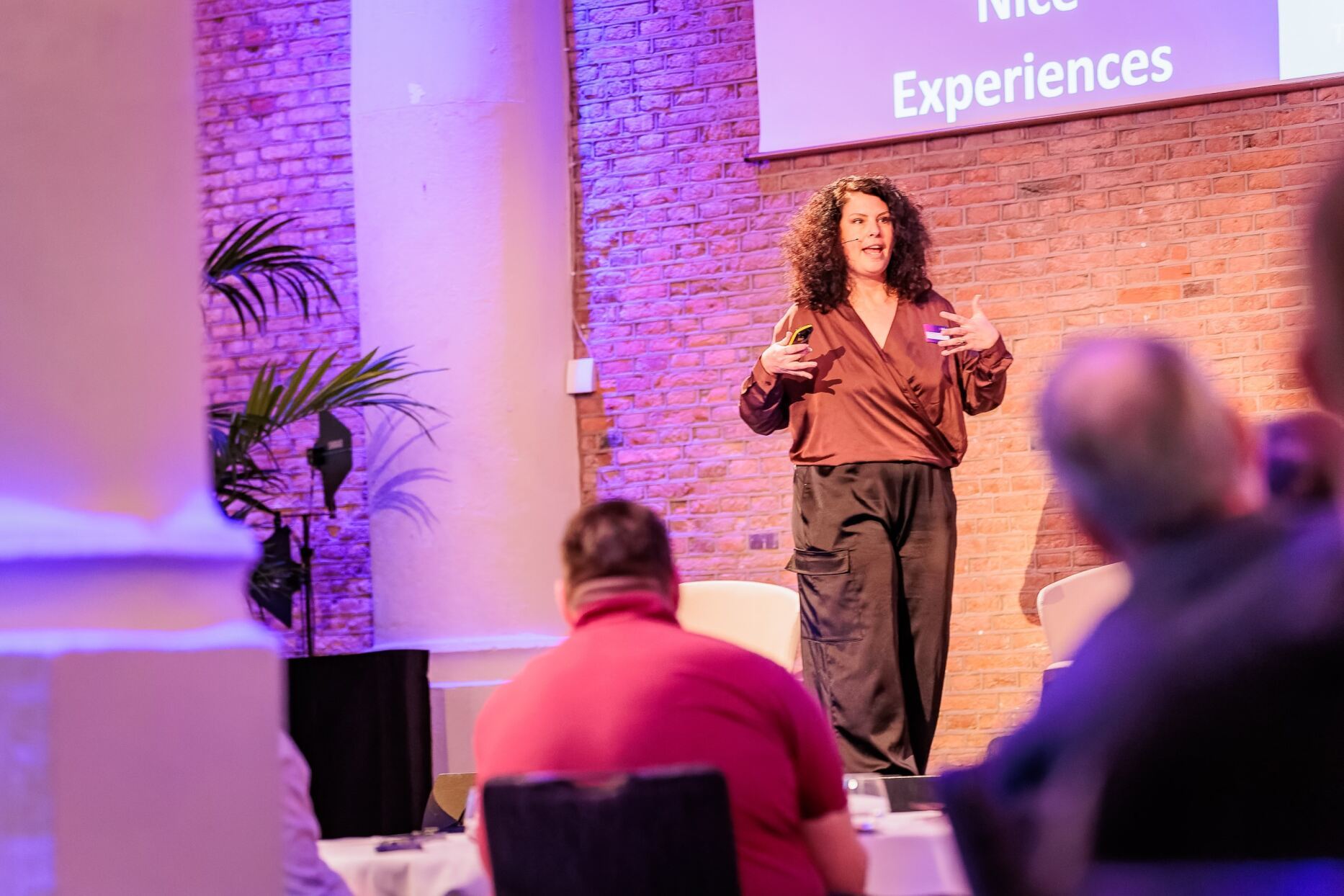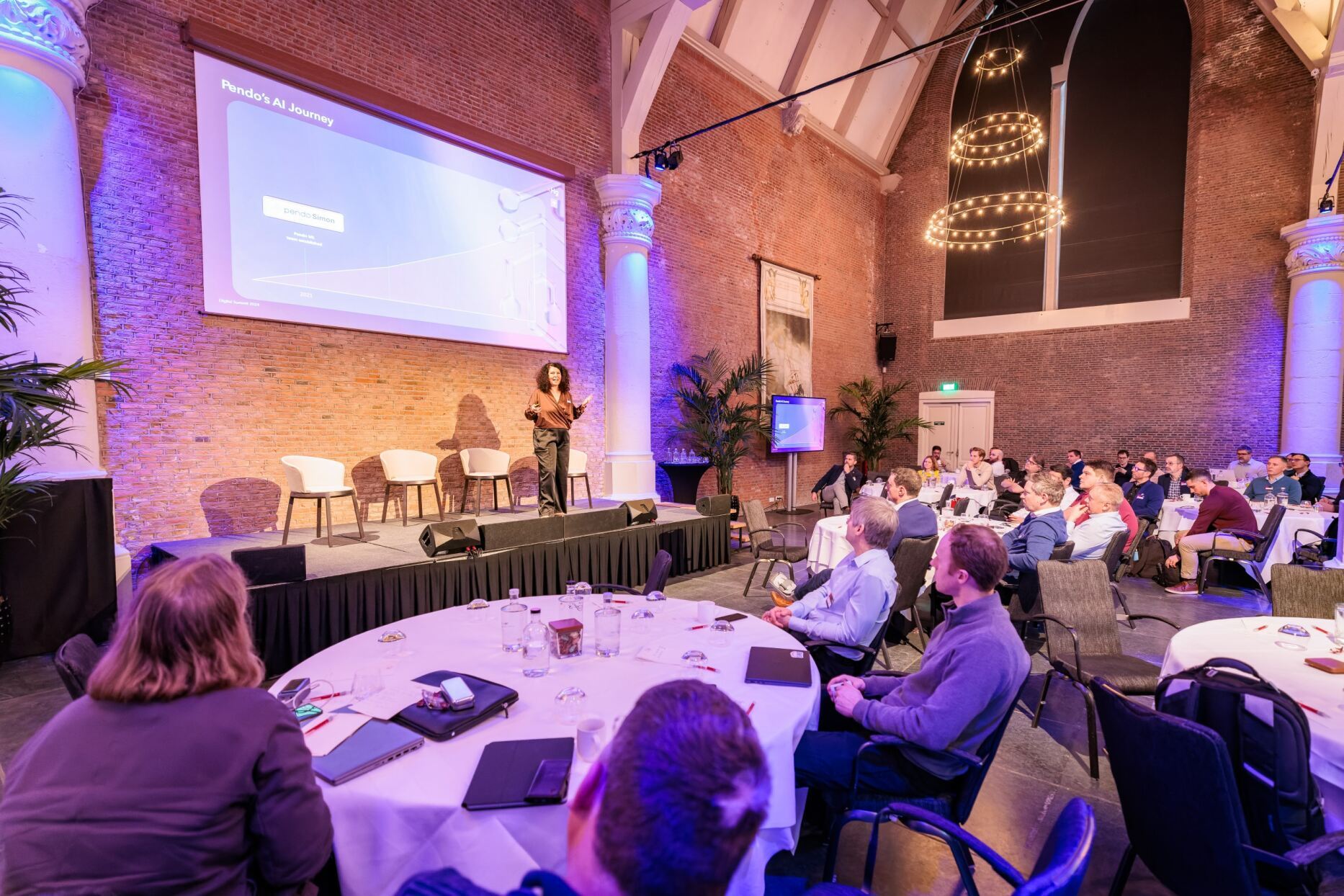Navigating the AI wave: Trends and future prospects in software development
Last month I gave a talk at an AI conference in Amsterdam, gathering executives from HG Capital’s portfolio companies and big tech companies such as Amazon and Microsoft.
During this spectacular event, I had the opportunity to engage with engineering and product leaders from various software as a service (SaaS) enterprises. These conversations, coupled with insightful talks, offered a glimpse into the diverse perspectives shaping the AI landscape in software development. It made me think of the emerging trends and possibilities that lie ahead in this ever-evolving field.

Democratizing AI
Traditionally, AI and machine learning (ML) have been the exclusive domain of specialized teams within companies, often led by a Chief AI Officer or Head of AI. However, a significant shift is underway as the software world moves towards democratized AI.
This shift involves empowering each engineering team to harness AI capabilities specific to their responsibilities, fostering a culture where AI development is not confined to a single department. The key lies in the hands of visionary leaders who are not only developing the necessary infrastructure, but also playing a crucial role in training their entire organization in AI principles.
Find your moat
Companies investing in AI typically develop two types of features: table stakes and moat features.
Table stakes features are fundamental enhancements to the customer experience that are expected as a baseline in any modern tool or platform—for example, automatic textual summaries and support chatbots. Textual summaries, for instance, condense large volumes of information into digestible insights, streamlining comprehension and decision-making. And support chatbots provide immediate assistance to users, enhancing overall customer satisfaction and engagement. With the introduction of Large Language Models (LLMs) such as ChatGPT, these capabilities have become almost a commodity.
While these table stakes features are essential for ensuring a competitive and comprehensive product, they are not the sole differentiators of great products. In fact, they represent the baseline requirements that customers now anticipate in any software offering. It’s crucial for companies to acknowledge and address these table stakes features in the planning stages of every new feature and capability, ensuring a solid foundation upon which more advanced AI capabilities can be built.
Moat features, on the other hand, go beyond the expected and unlock new dimensions of capability—often tied to the unique data a company gathers and the core problems it seeks to solve. These features are not only trickier to develop, but also carry the potential to elevate a product to new heights and set it apart in the competitive landscape. Thus, as software companies navigate the AI landscape, a strategic balance between table stakes and moat features becomes pivotal, with each contributing to an enhanced customer experience and a more robust, innovative product offering.

Collaborative ideation of engineers and product visionaries
Today, most AI innovations originate from engineers, who are closely tied to the technology itself. However, a transformative shift is on the horizon.
The true inflection point for a company’s AI journey will come when product managers (PMs) take the reins in generating AI feature ideas. PMs, who are already intimately connected with customer needs, have the potential to bring a new perspective to the table, encouraging teams to “dream bigger” about solving real customer problems. As software companies evolve, empowering PMs to drive AI ideation together with engineers will ensure a more customer-centric and impactful integration of AI within their products.
In the pursuit of riding the AI wave, software companies are at a crossroads, with the opportunity to democratize AI, identify and invest in moat features, and shift the origin of AI ideas from engineers to product managers. By embracing these trends, organizations can not only enhance their technological capabilities, but also create innovative solutions that truly resonate with their customers, propelling them into the future.
To embark on this journey of transformation for yourself, check out Pendo Discover. By seamlessly collecting and analyzing customer feedback—and even suggesting feature ideas—Pendo Discover empowers you to pinpoint exactly what your customers want.

